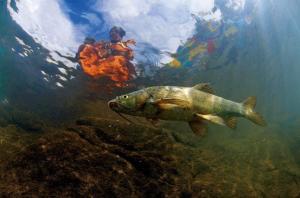
Schizothorax macropogon
Schizothorax macropogon,Giant beard bow fish, beard fish
Features:There are two pairs, long, the front of the front of the gill lid at the end of the forefront, and the back of the main gill cover of the main gill cover at the end of the back
Giant Behavior Fish Latin Name Schizothorax Macropogon is a kind of fish that is a fish -shaped carp -shaped carp -shaped carp belly fish.> Giant bearded belly fish is mainly used in water -free vertebrates and aquatic insects in water. The preferences are inhabited by rivers. The water depth is...
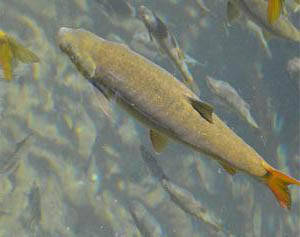
Schizothorax chongi
Schizothorax chongi,
Features:As one of the famous fish of Jinsha River
Schizothorax Chongi (fang), which is a fine -scale split -abdomen, is a unique species in my country.> Fine -scale cracked belly fish is successfully domesticated, and it is carefully cultivated. After the adrenal development is mature, artificial reproduction tests are conducted. From 2005 to 20...
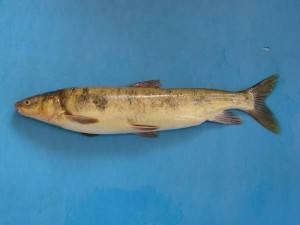
Platypharodon extremus
Platypharodon extremus,Wide tooth schizothoracin,Flat -pharyng tooth fish, small mouth fish, catfish, grassfish
Features:The back of the body is yellow -brown or lead brown, with a small number of non -obvious block -shaped dark spots, silver white in the abdomen
Polar flat pharyngeal fish Latin scientific name PlatyPharodon Extiremus, foreign name Wide Tooth Schizothoracin, no subspecies.The polar flat pharyngeal fish is mainly aquatic plant corruption and algae, and occasionally eats floating animals and mosquito larvae.The mature male fish has white granu...

Chuanchia labiosa
Chuanchia labiosa,Huanghe naked carp,Big mouth catfish, sperm, flower fish, Yellow River fish
Features:Bone lips Yellow River fish is one of the unique fish in the upper reaches of the Yellow River, one of the small economy.
Bone Lip Yellow River Fish Latin scientific name Chuanchia Labiosa, foreign name Huanghe Naked Carp, no subtype.Bone lips Yellow river fish are mainly eaten with raw diatom and insects.Each egg produces about 2700 capsules with a mature female eggs with a length of about 200 mm in length, which is y...
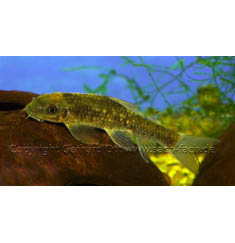
Epalzeorhynchos bicornis Wu
Epalzeorhynchos bicornis Wu,Red Eye Fish, Kok Fish
Features:Smooth, cylindrical. The head is small, the kiss is round and blunt, and there is a active triangular side leaf on each side
Corporal Latin scientific name EpalzeorHynachos Bicornis & Nbsp; WU is a unique species in China.Corner fish is a small freshwater fish, which mainly inhabits the lower layer of the bottom of the rock. Scrape raw algae. The body is small, and the body length is generally 100-150 mm.In recent yea...
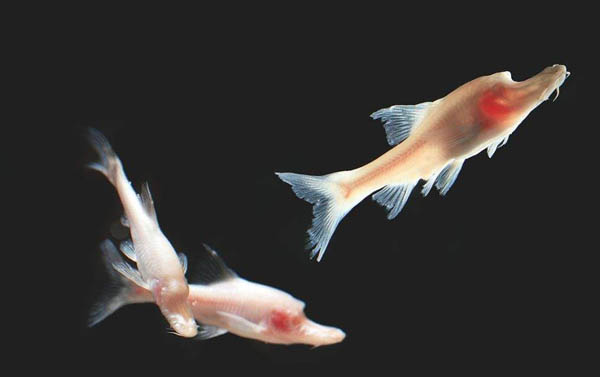
Typhlobarbus nudiventris
Typhlobarbus nudiventris
Features:When alive, the body is translucent, with a faint reddish tint, and gray-black intestinal contents can be seen in the abdomen
The Latin name of naked blind barb is Typhlobarbus nudiventris, a fish of the genus Typhlobarbus in the family Cyprinidae.The number of naked blind barb is extremely rare. The two specimens obtained later were kept in a ceramic water tank for several days. When at rest, it supports its body with the...
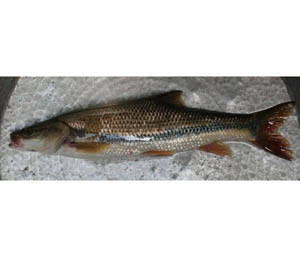
Percocypris tchangi
Percocypris tchangi
Features:Gill rakers are short, pointed, and sparsely arranged
The Latin name of Zhang's perch is Percocypris tchangi, and the specific epithet is taken from the surname of Zhang Chunlin, a famous Chinese ichthyologist. There was considerable controversy over the classification of Percocypris species, and this species was once considered a synonym of Percoc...
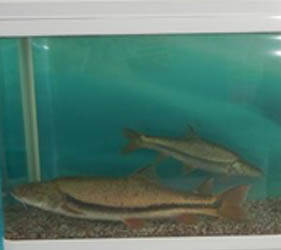
Percocypris pingi retrodorsalis
Percocypris pingi retrodorsalis,Flower fish, back perch
Features:The dorsal fin is located posteriorly, the snout and mouth are wide, the tentacles are well-developed, and there is a wide black pigment band along the lateral line on both sides of the body
The Latin name of the retrodorsalis percocet is Percocypris pingi retrodorsalis, which is a fish species endemic to the Lancang River and Nu River in China.The diet of the back perch carp is carnivorous, feeding on small fish and shrimps. The common individuals are 3 to 5 kilograms, and the largest...
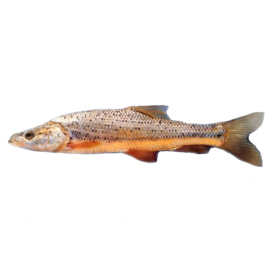
Percocypris pingi regani
Percocypris pingi regani
Features:It has rich meat and is a large economic fish.
The Latin name of the spotted carp is Percocypris pingi regani, a species of fish belonging to the genus Sinapis of the family Cyprinidae of the order Cypriniformes.The spotted carp lives in the middle and upper layers of open water. It moves quickly and is a ferocious fish that specializes in hunti...
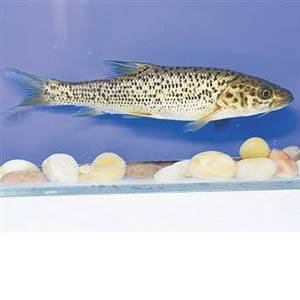
Percocyprispingi
Percocyprispingi,Big flower fish, leopard flower fish
Features:A ferocious carnivorous fish, known as the "tiger" of the Jinsha River
Jinsha perch carp, Latin name Percocyprispingi, is a precious, rare and unique indigenous fish in Yunnan.Jinsha perch carp juveniles mostly live along the coast of tributaries or main streams, while adult fish swim in the middle and upper layers of open water areas. It is a fast-moving, ferocious fi...
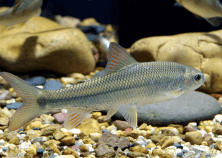
Scaphesthes macrolepis
Scaphesthes macrolepis,Largescale shoveljaw fish,Money fish, white-armored fish, red-scaled fish, multi-scaled shovel-jawed fish, multi-scaled proboscis fish
Features:The body is relatively slender and flat on the sides. The back is slightly raised and the abdomen is round.
The Latin name of the multi-scale white snapper is Scaphesthes macrolepis, and the foreign name is Largescale shoveljaw fish, with no subspecies.The multi-scale white snapper is a warm-temperate freshwater fish. It lives in high mountain streams with clear water and sandy and gravelly bottom at an a...
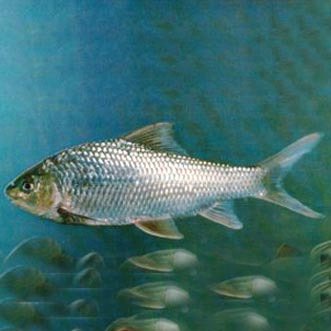
Onychostoma angustistomata
Onychostoma angustistomata,Small mouth white nail, sharp mouth white nail, wax brown
Features:Likes to live in clear, gravelly water.
The Latin name of Sichuan white snapper is Onychostoma angustistomata. It is a medium-sized edible fish in the upper reaches of the Yangtze River. Although its production is not as high as that of white snapper, its meat quality is better. It is one of the fish that people in the production area lik...
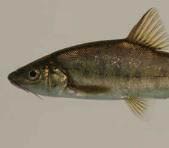
Sinocyclocheilus
Sinocyclocheilus,Golden thread fish, small hole fish, pineapple fish
Features:The body is long, the sides are flat, the back of the head is significantly bulged and curved, and some are translucent and pink in color.
The Latin name of Sinocyclocheilus is Sinocyclocheilus, which is a general term for fish of the Cypriniformes, Cyprinidae, and Sinocyclocheilus genus.The young golden line barb mainly feeds on zooplankton and aquatic insects, and also eats a small amount of algae and higher plant fragments; the adul...
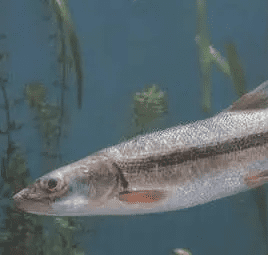
Luciocyprinus langsoni Vaillant
Luciocyprinus langsoni Vaillant,Luciocyprinus langsoni
Features:The body is long and stick-shaped, slightly flattened behind the dorsal fin, and the abdomen is round and without edges.
The Latin name of the single-striped Luciocyprinus langsoni Vaillant is Luciocyprinus langsoni Vaillant, which is an animal of the Cyprinidae family.Listed in the second level of the "List of National Key Protected Wildlife in China".Protect wild animals and stop eating game.Maintaining ec...
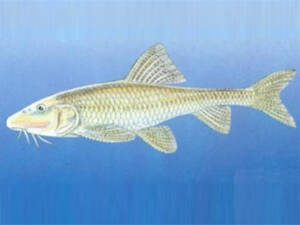
Gobiobotiahomalopteroidea Rendahl
Gobiobotiahomalopteroidea Rendahl,eight-whiskergudgeon,Eight-bearded fish, pike
Features:The body is long and cylindrical, slightly flattened at the rear, with a slender caudal peduncle and 4 pairs of whiskers.
The Latin scientific name of the flat-finned loach is Gobiobotiahomalopteroidea Rendahl, and its foreign name is eight-whiskergudgeon. It belongs to the genus Gobiobotiahomalopteroidea of the family Cyprinidae and is endemic to my country.The flat-finned loach has high requirements for living condit...
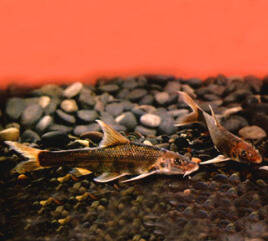
Rhinogobio ventralis
Rhinogobio ventralis,Foreign fish, earthworm, long-fin goby
Features:The dorsal fin is long, the back of the body is dark gray with a slight yellow tint, and the abdomen is grayish white.
The long-finned goby, whose scientific name is Rhinogobio ventralis, is a fish of the Cyprinidae family and the genus Rhinogobio, with no subspecies. The long-finned snout goby has a wide range of activities in spring and summer, often foraging in rapids, deep canyons, and tributary outlets. I...
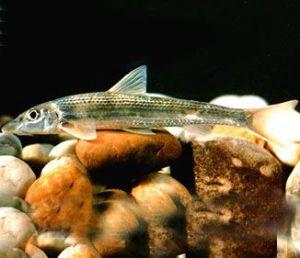
Rhinogobio nasutus
Rhinogobio nasutus,Big nose goby
Features:Very similar to the pigeon fish
The Latin name is Rhinogobio nasutus, which is an aquatic animal belonging to the class of ray-finned fish and is distributed in Gansu and other regions of my country.The specific information is unknown.Listed in the second level of the "List of National Key Protected Wildlife in China".Pr...
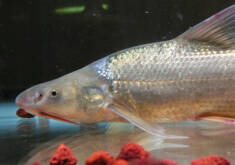
Coreius guichenoti
Coreius guichenoti,Square head water nose, water nose, golden loach, net mouth, twist, fat Tuo, water dense, round mouth copper fish
Features:The body shape is very similar to that of a black carp, but if you look closely, its mouth looks a bit like a carp, and it has a beard.
Coreius guichenoti, Latin name of round-mouthed copper fish, is a fish of Cyprinidae and genus Coreius.Round-mouthed copper fish is an important economic fish in the upper reaches of the Yangtze River. Common individuals are mostly 0.5 to 1 kg, and the largest can reach 3.5 to 4 kg. The artificial d...
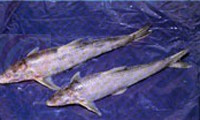
Coreius septentrionalis
Coreius septentrionalis (Nichols),Northernbronze-gudgeon,Pigeon fish, sand spit, sharp-mouthed water tuna, yellowhead fish (ancient name), northern copper fish
Features:Looks like a cute pigeon from the side
The Latin name of the Northern Bronze-gudgeon is Coreius septentrionalis (Nichols), and its foreign name is Northern Bronze-gudgeon. It is a freshwater fish of the Cyprinidae family of the Cypriniformes order. It is commonly known as the Pigeon Fish and is a species endemic to China.Northern copper...
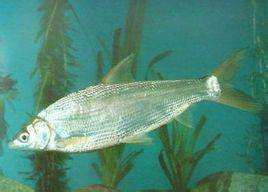
Anabarilius transmontana
Anabarilius transmontana,Mountain Whitefish
Features:The head is blunt, the body is flat, and the peritoneum is gray-black.
Anabarilius transmontana, a species of fish belonging to the Cyprinidae family, is endemic to China.Anabarilius transmontana is a small fish that likes to live in slow-flowing water environments and can grow and reproduce in lakes or rivers. It was once an important fishery target in Datun Lake in Y...
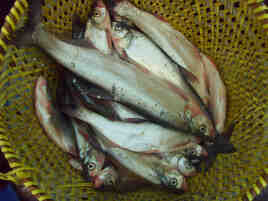
Anabarilius polylepis
Anabarilius polylepis,Large white fish, peach white fish, multi-scale white fish
Features:The body is long and flattened, reproduces quickly, and grows fast.
Anabarilius polylepis, the Latin name of the multi-scale whitefish, is a fish species unique to Yunnan, China.The main food of multi-scale whitefish is aquatic plants, followed by small fish and shrimp. 1 winter age can reach sexual maturity, and in early spring every year, the parent fish swims in...

